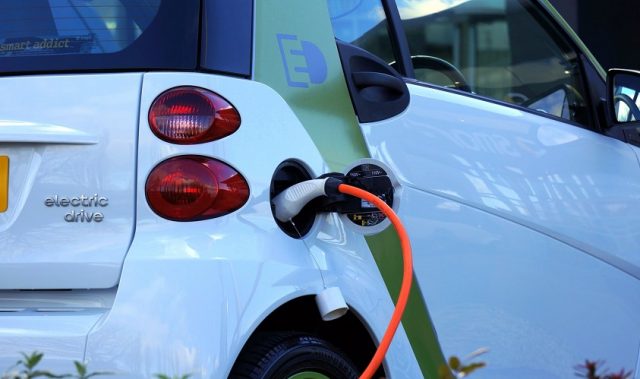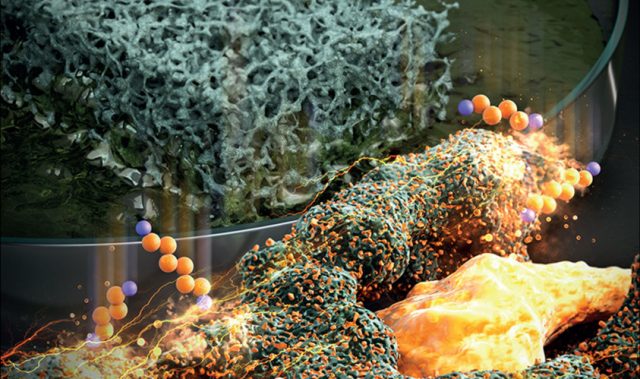
AsianScientist (Mar. 9, 2018) – A research team from the Korea Advanced Institute of Science and Technology (KAIST), South Korea, has developed a hybrid energy storage device that can be charged in less than half a minute. They reported their findings in Advanced Energy Materials.
A device’s energy storage capacity is determined by its two electrodes. If the two electrodes exhibit differences in electrical properties and ion storage mechanisms, the energy storage device will have poor storage capacity and stability.
In this study, researchers led by Professor Kang Jeung Ku at KAIST came up with novel structures and materials to facilitate rapid energy exchange on the surfaces of electrodes and minimize the energy loss between the two electrodes.
They assembled fiber-like polymer chain anodes and sub-nanoscale metal oxide cathodes on graphene. The web-like structure of graphene leads to a high surface area, thereby allowing higher capacitance. For cathode materials, the team used metal oxide in sub-nanoscale structures to elevate atom-by-ion redox reactions.
Additionally, the researchers used aqueous electrolytes instead of flammable organic solvents, making their device environmentally friendly and safe. Collectively, these modifications allowed the researchers to achieve high energy and power densities, as well as longer life cycles.
The researchers further demonstrated that their energy storage device could be charged within 20 to 30 seconds using a low-power charging system, such as a USB switching charger or a flexible photovoltaic cell. Their device demonstrated more than 100-fold higher power density compared to conventional aqueous batteries and can be rapidly recharged. Furthermore, their device showed high stability with its maintained its capacity at 100 percent even at a high charge/discharge current.
“This eco-friendly technology can be easily manufactured and is highly applicable. In particular, its high capacity and high stability, compared to existing technologies, could contribute to the commercialization of aqueous capacitors. The device can be rapidly charged using a low-power charging system, and thus can be applied to portable electronic device,” said Kang.
The article can be found at: Ock et al. (2018) Synthesis of Pseudocapacitive Polymer Chain Anode and Subnanoscale Metal Oxide Cathode for Aqueous Hybrid Capacitors Enabling High Energy and Power Densities along with Long Cycle Life.
———
Source: Korea Advanced Institute of Science and Technology.
Disclaimer: This article does not necessarily reflect the views of AsianScientist or its staff.












